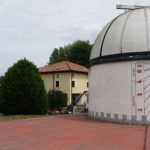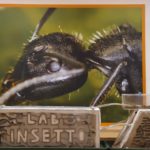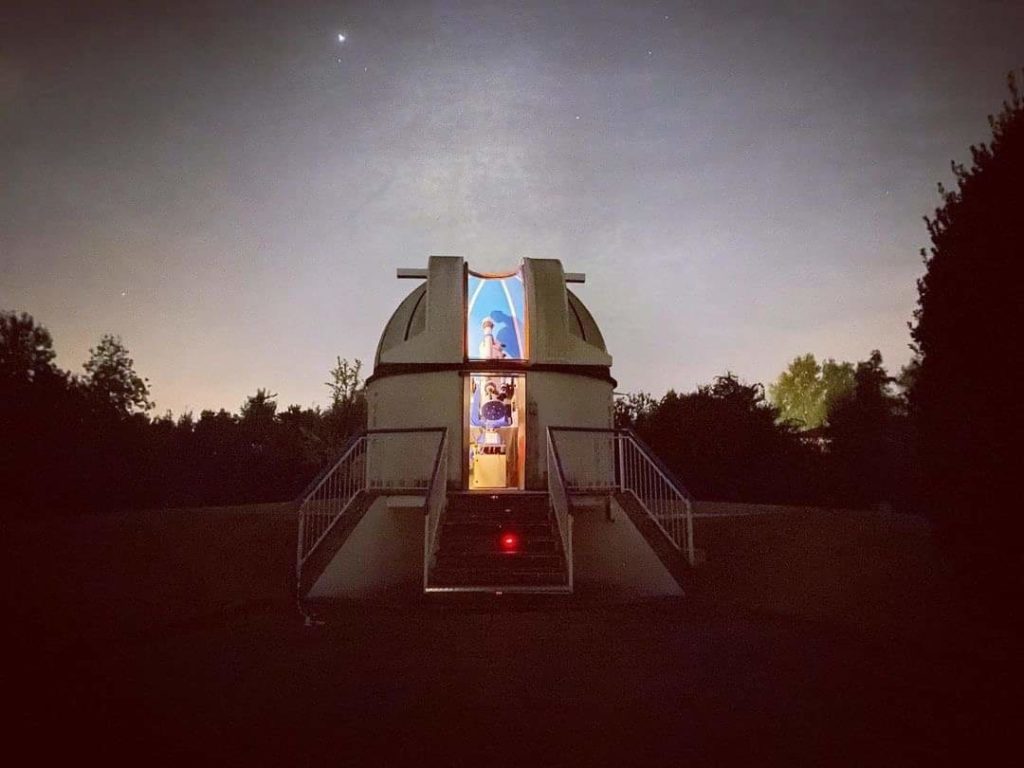- Home Page
- English




Museo del Cielo e della Terra (Museum of Sky and Earth) is part of the Terre d’Acqua Museum System. It is the science and environmental Museum in the metropolitan area of Bologna and it tells to the public and schools the relationship between sky and earth, plants and animals without forgetting the man and his connection with resources and technology. Founded in 1998, it consists of the astronomical area with Planetarium, Fisica Experience, “U. Aldrovandi ” Botanical Garden and Insect Laboratory.
The astronomic area – Planetarium
The astronomic area is composed by an Astronomical Observatory, a Meteorological station and one of the biggest Planetariums in Italy; there is also an important exhibition section consists of over 1000 meteorites, fulgurites, minerals, sections of trunks and scientific experiments models. The Planetarium, with a dome of over 9 meters in diameter, is able to reproduce the entire celestial vault as well as fulldome images and videos; the Observatory allows you to see planets, moons, nebulae, galaxies and sunspots “live”, the meteorological station has various tools for reading and understanding the signs of sky.
Fisica Experience
Fisica Experience is an educational laboratory that deals with the culture of physics and, more generally, with the natural sciences, created in collaboration with the Physics Museum of the University of Bologna with the aim of getting students and visitors know the fundamental laws of nature that are the basis of all the world phenomena. The exhibition itinerary focuses on the concepts of geometric time and space making avant-garde interactive stations and immersive installations available to visitors, as well as educational workshops for schools. In this way it will be possible to interactively appreciate and understand the simplicity and complexity of things.
Insect Laboratory
The Insect Laboratory is a “living museum” dedicated to Entomology. The insects represent living group with the greatest biodiversity on the planet, constituting a simple and immediate key to understanding issue such as evolution and adaptations, ecosystems and food chains, the laws of physic and genetics. The possibility to observe live insects bred in the Laboratory allows you to closely analyze a wide variety of complex forms and behaviors, such as bee dance or the social dynamics of an ant colony.
Botanical Garden “U. ALDROVANDI”
Entitled to the bolognese naturalist Ulisse Aldrovandi, the Botanical Garden offers an area of about 2 hectares with typical habitats of our plain. About 300 species of trees and shrubs typical of the spontaneous flora of Emilia Romagna are grown here, as well as various herbaceous, terrestrial and aquatic plants: an opportunity to understand the rich biodiversity of the Po Valley and, in general, of the Italian flora. Plants are distributed in systematic groups functional to their observation, or in small reconstructions of vegetation environments (Mediterranean, hydrophilic, xerophilous and tree-lined hedges).

The astronomic area – Planetarium
Opening times: Friday: 21.00 (conferences, concerts, projections of sky: monthly programming); Sunday: 15.30 (recreational-didactic activities for children and families: monthly programming).
Possibility of opening on request and tours for schools by contacting the Museum Secretary office.
CLOSE: July and August, Christmas and Easter festivities.
Tickets: full rate 6 euro, reduced rate 4 euro. Access for the disabled people.
Fisica Experience
Opening times: Saturday: 10.00; Sunday: 16.00 (visit the exhibition itinerary and recreational-didactic activities for children and families: monthly programming)
CLOSE: July and August, Christmas and Easter festivities.
All the year: Possibility of opening on request and tours for schools by contacting the Museum Secretary office.
Tickets: full rate 7 euro, reduced rate 6 euro. Access for disabled people.
Insect Laboratory
Opening times: Sunday: 15.30 (recreational-didactic activities for children and families: monthly programming)
CLOSE: July and August, Christmas and Easter festivities.
All the year: Possibility of opening on request and tours for schools by contacting the Museum Secretary office.
Tickets: full rate 6 euro, reduced rate 4 euro. Access for disabled people.
Botanical Garden “U. ALDROVANDI”
Free access; possibility of tours for schools by contacting the Museum Secretary office
Secretary office:
E-mail: segreteria@agenter.it
Phone number: +39 051-6871757
